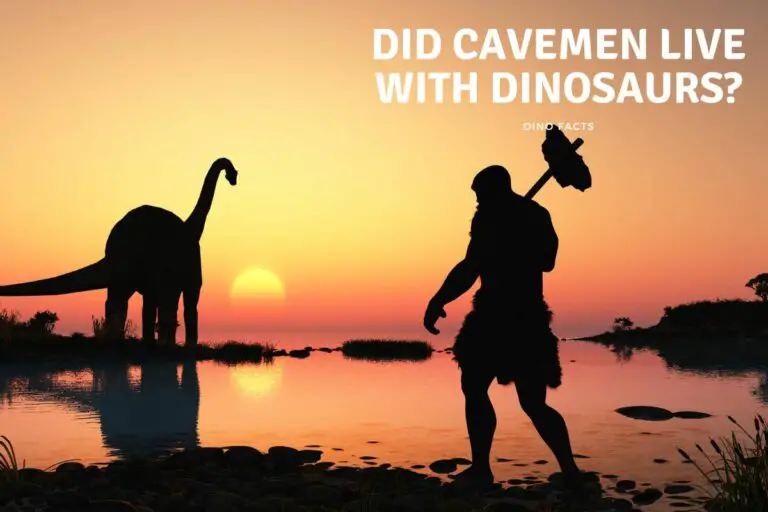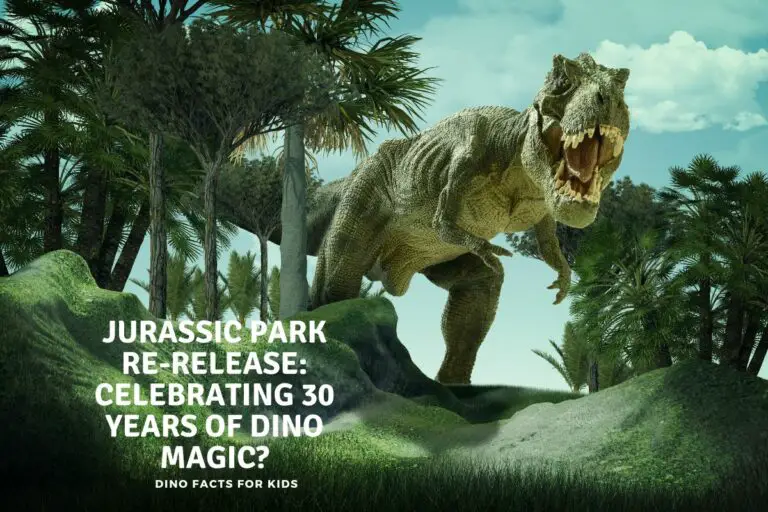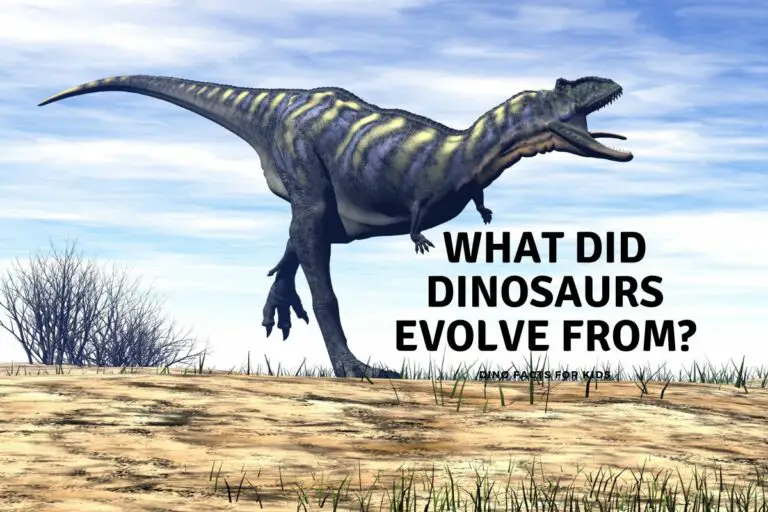Dinosaur Facts: Lystrosaurus
The lystrosaurus, or shovel lizard, has caught the publics eye recently due to its recent appearance in Jurassic World Dominion. However this stocky pig like – mammal like ancestor has much bigger claims to fame, bigger even than the worlds largest dinosaur movie. We look at some Lystrosaurus facts below.
Lystrosaurus is a Dicynodont, ‘two toothed dog’ that lived before dinosaurs evolved at the boundary of the Permian – Triassic Extinction 255 – 250 million years ago. It was 2-8-foot-long and weighed between 60-200 lbs. It is famous for successfully surviving then thriving after the largest extinction event on Earth.
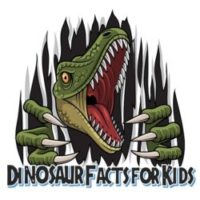
There are two animals in earths history that lay claim to be the poster child of survival, one is called the tardigrade the other is the Lystrosaurus. The Tardigrade is invisible to the naked eye and survive, for a while, in the vacuum of space and the Lystrosaurus is a 8 foot long animal from before the time of the dinosaurs and has survived the worst extinction the planet has ever seen.
We take a look at Lystrosaurus facts here to learn a little more about this natural born survivor.
Despite its appearance in the Jurassic World dominion move, we really think rather than just looking cute, it should be known for its more impressive traits. One of those is that it really REALLY wouldn’t have needed that mask.
Don’t forget to check out and download the Lystrosaurus Facts sheets we have below and the coloring sheets linked in the article as well.
Lystrosaurus Quick Facts
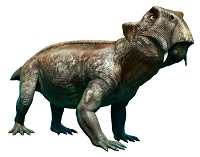
- Lystrosaurus could be between 2 and 8ft long, though the average is just under a metre or 3 ft long.
- Lystrosaurus could go up to about 200 lbs at its larger sizes, though average was more likely to be 60-100 lbs or 30-50 kg.
- Lystrosaurus was not a dinosaur. It was actually a dicynodont Therapsid, which is a mammal like reptile.
- Lystrosaurus was incredibly successful after the Permian – Triassic extinction event and survived when 95% of marine life and 70 % of land life went extinct.
- It is thought that the Lystrosaurus was incredibly adaptable, and would wander around able to make a life wherever it found its self.
- Lystrosaurus was a herbivore, with a turtle like beak and strong forelimbs that were possibly used to dig up roots and make burrows
- Lystrosaurus is a nice easy name to pronounce. It has 4 syllables and is said like this. Liss -Trow – Saw – Rus
How big was the Lystrosaurus?
Lystrosaurus could be between 2 and 8ft long, though the average is just under a metre or 3 ft long. The size of a medium to small dog. At its larger size in may have weighed up to 190 Pounds (90 Kg) but was usually much smaller and would have weighed about 60 + pounds. It was still a pretty stocky animal with those big fore limbs suitable for burrowing.
How heavy was the Lystrosaurus?
As Mentioned above the Lystrosaurus could go up to about 200 lbs at its larger sizes, though average was more likely to be 60-100 lbs or 30-50 kg.
How long was the Lystrosaurus?
Lystrosaurus was on average a short animal, with an average length of about 3ft (90 cm) though they could also be shorter than this at 2ft and grow up to 8ft long at their longest size.
Was Lystrosaurus a dinosaur?
Lystrosaurus lived 250 million years ago, just before the time of the dinosaurs. So Lystrosaurus was not a dinosaur. It was actually a dicynodont Therapsid, which is a mammal like reptile. this description is not 100% accurate but has been used to describe them for decades. They lived alongside archosaurs which are the ancestors of dinosaurs.
Dicynodont means two dog toothed, and dicynodonts are known for having two tusk like teeth in their upper jaw, though more like a boar than a dog in our opinion.
It actually survived the extinction event that happens around 250 million years ago ( not as well known as the one 65 million years ago) which signals the change of the permian to triassic periods and was incredibly sucessful. – we have more on that later.
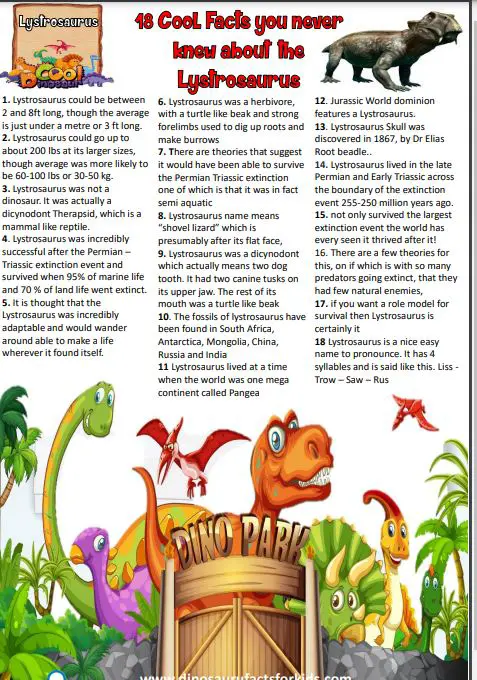
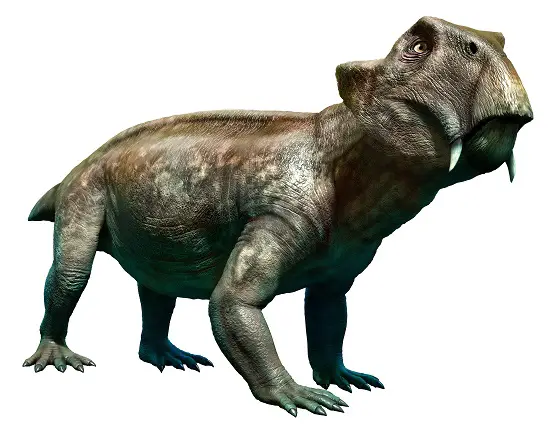
Why Was Lystrosaurus so Successful?
Lystrosaurus was incredibly successful after the extinction event and survived when 95% of marine life and 70 % of land life went extinct. (more on that later) around 252 million years ago there were the dominant life form on the planet. As we mentioned in some areas they are 95% of all fossils found!
There are a few theories for this, including with so many predators going extinct including the Moschorhinus and proterosuchus, that they had few natural enemies, and with larger or more specialised herbivores also going extinct they had access to more food and territory without competition.
We will look at other reasons below when we look at why they didn’t go extinct.
What was Lystrosaurus Habitat?
It is thought that the Lystrosaurus was incredibly adaptable, and would wander around able to make a life where ever it found its self. The volcanic activity that (possibly) caused the largest extinction event we know about did not make them go extinct and some of the reason that is there ability to “fit it” and adapt to their environment rather than specialize for it.
Particularly used full if you have an erupting volcano changing environments for about 1000 years straight!
Are Lystrosaurus related to Humans.
You will be pleased to hear that looking at a Lystrosaurus is not like looking in a mirror. Although mammal like ancestors, were alive at the time, Lystrosaurus did eventually go extinct a few million years after the Permian-triassic extinction event and we do not have a direct line to them, but we do to descend from animals like them.
This is a shame as if you want a role model for survival then Lystrosaurus is certainly it !
Why did Lystrosaurus Survive the Permian – Triassic Extinction Event.
this is the big question surrounding Lystrosaurus. This little pig-lizard-mammal not only survived the largest extinction event the world has every seen it thrived after it! The answers only come in the form of theories but we will take a look at them in brief below.
- Hibernation: It is thought they might have been able to slow down their metabolism to make it through lean times. if this was possible it would the earliest evidence of this trait.
- Large Lungs: the position and size of their nostrils, large lungs and a large chest may have allowed them to breath the lower quality of air after the extinction event where other animals could not. It probably wouldn’t have need the mask it was wearing in the Jurassic World Dominion Movie.
- Semi aquatic: as we mention about there are theories that Lystrosaurus was semi aquatic and could have survived in similar ways to crocodiles ( early ones)
- Lack of Specialization: SOme species of Lystrosaurus we not speciased, and these ones appear to have survived better than larger or more specialized family members.
- lack of predators: the larger predators went extinct and there was no animals left to eat the spare Lystrosaurus!
- Rather unscientifically, but never to be underestimated there is also luck to be taken into consideration.
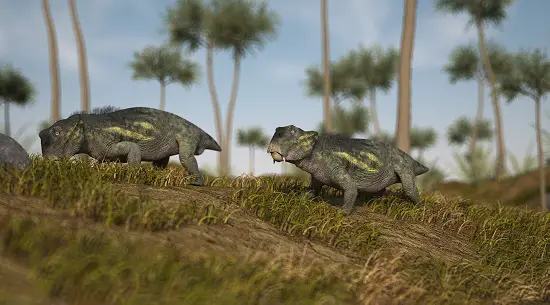
What Did a Lystrosaurus eat?
Although it had two canine like teeth or tusks was not a carnivore. In fact those two teeth were the only two in had in its mouth. The rest was a turtle like beak which is used to bite plants and vegetation. Lystrosaurus was a herbivore, and it had strong forelimbs that were possibly used to dig up roots and to build or dig burrows to sleep and nest in.
What Movies Have Featured a Lystrosaurus?
Jurassic World dominion features a Lystrosaurus in its trailers. It is wearing a mask and looks to be held in a cage in a warehouse, or testing type facility. So far this is the only movie to feature a Lystrosaurus. In fact Paleozoic and Triassic animals do not feature in movies very often at all.
When Did the Lystrosaurus become Extinct?
Fossils have been found of Lystrosaurus that date from 255 to 250 million years ago, when it was very successful accounting for up to 95% of all fossils found at soem dig sites. However no fossils have yet been found later than 250 million years ago and it is thought it went extinct around that time.
Could the Lystrosaurus Swim?
it is not known if the Lystrosaurus could swim. There are theories that suggest it would have been able to survive the permian Triassic extinction one of which is that it was in fact semi aquatic and survived much like crocodiles did 65 million years later. However there is no concrete evidence to support this, and only the suggestion that they had bigger lungs, which again is not proven lends real weight to this.
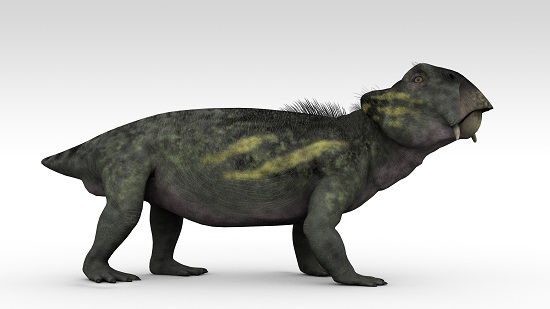
What does the name Lystrosaurus Mean?
Lystrosaurus name means “shovel lizard” which is presumably after its flat face, which looks both a pug dog today, and like it was hit in the face with a shovel! ( it was named as it had a flat face, not because of the being hit in the face, we are fairly sure of that)
How many Teeth Did Lystrosaurus have?
Lystrosaurus was a dicynodont which actually means two dog tooth. It had two canine tusks on its upper jaw. The rest of its mouth was a turtle like beak
Where were Lystrosaurus discovered?
The fossils of lystrosaurus have been found in South africa, Antarctica, mongolia, china, Russia and india
When did Lystrosaurus Live?
Lystrosaurus lived at a time when the world was one mega continent called Pangea, and are actually an animal that helps prove continental drift. They have been found in China, russia, Africa, Antarctica, Europe and mongolia. All from the same approximate time period.
Lystrosaurus lived in the late Permian and Early Triassic across the boundary of the extinction event 255-250 million years ago.
How Did Lystrosaurus walk?
Lystrosaurus would have walked with its legs out to the side, like other similar Dicynodonts at the time, almost like a slow lizard. its front legs were much larger, bulkier than its hind legs and it is thought tit used them to big burrows to sleep in.
Who discovered the Lystrosaurus?
Lystrosaurus Skull was discovered in 1867, by Dr Elia root beadle. He sent word of its discovery to orthniel March ( a famous paleontologist at the time) but never heard back. So it was examined by Edward Cope ( a rival of Marshes) who classified and named it.
interestingly later Othniel marsh bought the skull to reexamine. At the time the two most famous paleontologists had a intense dislike of each other and it is thought Marsh bought the skull to try to find fault in Copes research.
How to Pronounce Lystrosaurus?
Lystrosaurus is a nice easy name to pronounce. It has 4 syllables and is said like this. Liss -Trow – Saw – Rus
Liss – Trow – Saw – Rus
Conclusion
Appearing in a jurassic World Movie is certainly an awesome thing, surving the planet worse extinction is better and Lystrosaurus has now done both.
it is an advertisement for how looks can be deceiving, and its bulldog type appearance suggests it was a strong little animal ( with much better breathing abilities than the bulldog as well) that with its adaptable nature, and ( we think) can do attitude it shows that sometimes rooting for the little guy pays off!
We are not sure, yet, what role it will play in the upcoming Jurassic World movie, as at time of writing it is still 5 weeks away, but we hope it’s not one of a cute pet like dinosaur and more of a tunneling survivalist which it was born to be!
Don’t forget to look over the rest of our dinosaur facts pages, our coloring and facts sheets are also free to download. We have popular dinosaurs and non dinosaurs Like T-Rex and dimetrodon to some less well known ones that are appearing in the new Jurassic World dominion movies. We even have cool animals that were not dinosaurs, but kinda should have been like megalodon and Titanoboa.
There are answers to common dinosaur questions, and loads of other cool dinosaur activities and resources to look at. Just check them out on the big button below.
References
https://en.wikipedia.org/wiki/Permian%E2%80%93Triassic_extinction_event
https://www.britannica.com/animal/Lystrosaurus
https://journals.plos.org/plosone/article?id=10.1371/journal.pone.0259369
Hi, I am Roy Ford a General Studies and English Teacher who has taught all over the world. What started as a fossil collection became a great way to teach, motivate and inspire students of all ages and all over the world about dinosaurs and from that and children’s love of dinosaurs came the site dinosaur facts for kids, a resource for all ages.


![Jurassic World Dinosaur Snap Squad Collectibles for Display, Play and Snap On Feature for Attaching to Backpacks, Lunch Packs and More [Amazon Exclusive]](https://m.media-amazon.com/images/I/8182LQehTKL._SS520_.jpg)

